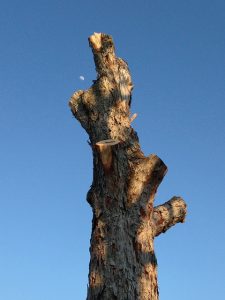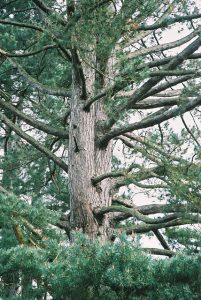Winterizing your trees might not seem like something that someone living in or around Redwood City needs to do, but it really is. Instead of making sure that our trees are protected from snow or salt from plowing companies, there are some other steps that we need to take.
Winterizing your trees might not seem like it is the most important thing to do, but it can really make a difference in your tree’s lives. Not only will they be healthier and more likely to stand up against the weather that winters throw at it (and with some of the weird weather we’ve gotten, we might get more than anticipated), they will be healthier for the rest of the year as well. While you might not notice it, winter is the time when trees do most of their work, preparing for the next season’s growth, fixing any wounds that occurred during the summer months, and even shifting internally so that they can continue to be healthy and grow.
So what should you do to ensure that your trees survive the winter months? Follow these four steps:
4. Cut Off Any Dead Branches
- Do not prune your trees the first few years they are alive if possible
- All trees have different times to prune – make sure now is best for you
- Sterilize tools so that you do not spread any diseases
Cutting trees is an important way to keep them safe and healthy, especially in the winter. If you are looking to prune trees, make sure that you aren’t making many cuts at all on your own. A good rule of thumb is that you need to make more than five cuts, or those cuts will require more than a hand clipper, you need a professional.
According to the US Department of Agriculture, prune only to “remove suckers, crossed branches that may injure others and to maintain a rounded shape on a mature tree.” This is about what a homeowner can handle without doing damage to your trees.
Of course, you absolutely need to use proper technique and tools when you are trimming or pruning your trees. You can really harm your trees, and now is not the time when you want to add to the burden the tree has to carry – one more wound to repair can be deadly.
Still, you really need to ensure that dead branches are removed. These can fall in some of the storms that we get, causing home and property damage.
3. Check For Pests
- Check for dead bark areas, holes in the park, or swarms of pests
- Eliminate using gentle tools and substances
- May require professional intervention
Pests typically show themselves during the summer months, but you might have missed them. During the winter months, their leftovers are easy to spot – you can see holes, homes, and debris leftover from their reign on your tree. For the most part, you can treat pests the same way in the winter that you do in the summer, but some techniques work better depending on the weather.
It is important to heal the tree from any problems that the pests may have posed, according to Arbor Day. Any openings or wounds may present an opportunity for other pests to move in during the spring or summer season the next year, so take care of them now when you can see everything.
2. Don’t Clear Away Leaves
- Clear leaves from hardscaping and lawns
- Around tree roots, however, it makes compost
- Make sure to check roots
One common mistake that some tree owners make is that they clean all of the leaves out of their gardens in the winter months. If you have tree leaves or other lawn debris in your gardens, keep it. This makes for great insulation for the trees in the colder months. It also acts as a mulch of sorts, keeping pests and foragers away from the roots and base of the tree.
According to the Chicago Tribune, ” You can use whole leaves as a healthy layer over garden soil, or shred them into smaller pieces by going over a pile in the grass with the lawnmower. They also won’t blow around as much when spread on perennial beds. In less conspicuous corners, there’s no need to shred the leaves; just spread them over the roots of the trees and shrubs, like in the woods.”
If in doubt, you should remove the debris – make sure you don’t add extra chemicals to your gardens.
1. Deep Water Trees
- Make sure to water down toward the roots
- Use a monitor and ensure water goes at least 12-18″ deep
- Check on your individual plants – some need deeper watering than others
For most of us, we try to use water sparingly and therefore we only dampen the soil around our trees. However, in the winter you really want to go deeper and ensure that the soil gets a thorough soaking. To do this, you can collect rain over the summer season so that you aren’t using too much.
To make the most of what you have, according to Slate, make sure that you aim for the roots. The leaves cannot absorb water, nor can the branches. In the colder winter months, water may hang around a bit on the soil, but don’t make it a puddle.
Deep watering should start earlier in the season, but it is better to do it once or twice before the coldest weather really hits.
If you are looking for a tree care professional in Redwood City, give Econo Tree Service a call today at (650) 200-2495. We will help you to better understand your trees and how to handle any watering, planting, pruning, or other tree issues that you may find – of course, we can also help you with other issues as well, including any seasonal tree care needs that you may have. We will provide you with the best possible tree service in the area, and provide you with real solutions that work.





